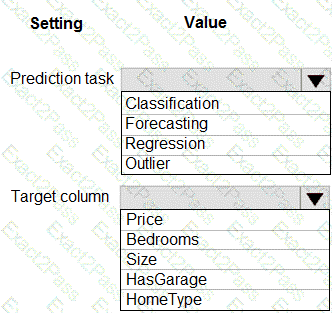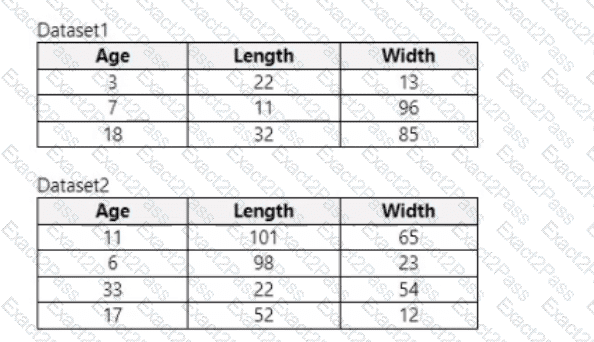Last Update 5 hours ago Total Questions : 516
The Designing and Implementing a Data Science Solution on Azure content is now fully updated, with all current exam questions added 5 hours ago. Deciding to include DP-100 practice exam questions in your study plan goes far beyond basic test preparation.
You'll find that our DP-100 exam questions frequently feature detailed scenarios and practical problem-solving exercises that directly mirror industry challenges. Engaging with these DP-100 sample sets allows you to effectively manage your time and pace yourself, giving you the ability to finish any Designing and Implementing a Data Science Solution on Azure practice test comfortably within the allotted time.
You create a multi-class image classification deep learning model that uses the PyTorch deep learning
framework.
You must configure Azure Machine Learning Hyperdrive to optimize the hyperparameters for the classification model.
You need to define a primary metric to determine the hyperparameter values that result in the model with the best accuracy score.
Which three actions must you perform? Each correct answer presents part of the solution.
NOTE: Each correct selection is worth one point.
You manage an Azure Al Foundry project.
You need to develop a solution that uses an Azure OpenAI Service model designed to support reasoning and problem solving. Which model should you use?
You have a dataset that includes home sales data for a city. The dataset includes the following columns.

Each row in the dataset corresponds to an individual home sales transaction.
You need to use automated machine learning to generate the best model for predicting the sales price based on the features of the house.
Which values should you use? To answer, select the appropriate options in the answer area.
NOTE: Each correct selection is worth one point.

You create an Azure Machine Learning workspace.
You must configure an event handler to send an email notification when data drift is detected in the workspace datasets. You must minimize development efforts.
You need to configure an Azure service to send the notification.
Which Azure service should you use?
You are implementing hyperparameter tuning by using Bayesian sampling for an Azure ML Python SDK v2-based model training from a notebook. The notebook is in an Azure Machine Learning workspace. The notebook uses a training script that runs on a compute cluster with 20 nodes.
The code implements Bandit termination policy with slack_factor set to 02 and a sweep job with max_concurrent_trials set to 10.
You must increase effectiveness of the tuning process by improving sampling convergence.
You need to select which sampling convergence to use.
What should you select?
Note: This question is part of a series of questions that present the same scenario. Each question in the series contains a unique solution that might meet the stated goals. Some question sets might have more than one correct solution, while others might not have a correct solution.
After you answer a question in this section, you will NOT be able to return to it as a result, these questions will not appear in the review screen.
You use Azure Machine Learning designer to load the following datasets into an experiment:

You need to create a dataset that has the same columns and header row as the input datasets and contains all rows from both input datasets.
Solution: Use the Apply Transformation module.
Does the solution meet the goal?
You have an existing GitHub repository containing Azure Machine Learning project files.
You need to clone the repository to your Azure Machine Learning shared workspace file system.
Which four actions should you perform in sequence? To answer, move the appropriate actions from the list of actions to the answer area and arrange them in the correct order.
NOTE: More than one order of answer choices is correct. You will receive credit for any of the correct orders you select.


